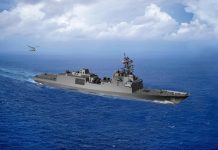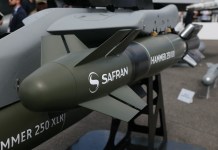The U.S. has signed the BUILD Act to intensify its influence in the Indo-Pacific region. The BUILD Act does not want to defy the Chinese influence rather wants the US to promote economic growth and governance in the strategic region, says the top US official.
US Keeps China Out of Indo-Pacific Region with $300 Million Master Stroke
Thomas L. Vajda, Deputy Assistant Secretary of Bureau of South and Central Asian Affairs emphasised saying, “The newly-formed Indo-Pacific framework remains inclusive and welcoming to Chinese participation only if the East Asian behemoth does not subscribe to the “predatory and coercive” tactics it had enforced previously during investments into the Hambantota Port, Sri Lanka.”
Reemphasizing the American support for India’s regional ambitions in the Indo-Pacific within the provisions of the BUILD Act, Vajda said: “We welcome the Chinese economic activity in the region but only if it meets the prescribed international standards for free, transparent processes, sound, and merit-based procurement practices. The problem is, we have seen China not following such rules in the past, resulting in corruption at Hambantota. The [Chinese] approach is and remains antithetical to the principles we [Americans] espouse.”
Last year in the month of October, the U.S. President signed the Act to enhance American influence in the Indo-Pacific. The Act also formed an international Development Finance Corporation with a lending limit of $60 billion to promote private sector investments globally. During his Mumbai visit, Vajda discussed prospects of equity investments with partner finance institutions. “This will ensure the Indian companies understand how to tap into the opportunities arising out of the new framework”, Vajda said.
Emphasizing on the economic value of the regional Quad consisting of India, U.S., Japan, and Australia, the seniormost official in Trump administration, Vajda informed saying, “Our goal is not to behave like China or match them dollar for dollar. On the contrary, economic growth and governance remain the two central pillars of the American Indo-Pacific vision. The Quad itself is a like-minded gathering of four democracies who have a similar vision for the region. It is not a military enterprise.”




